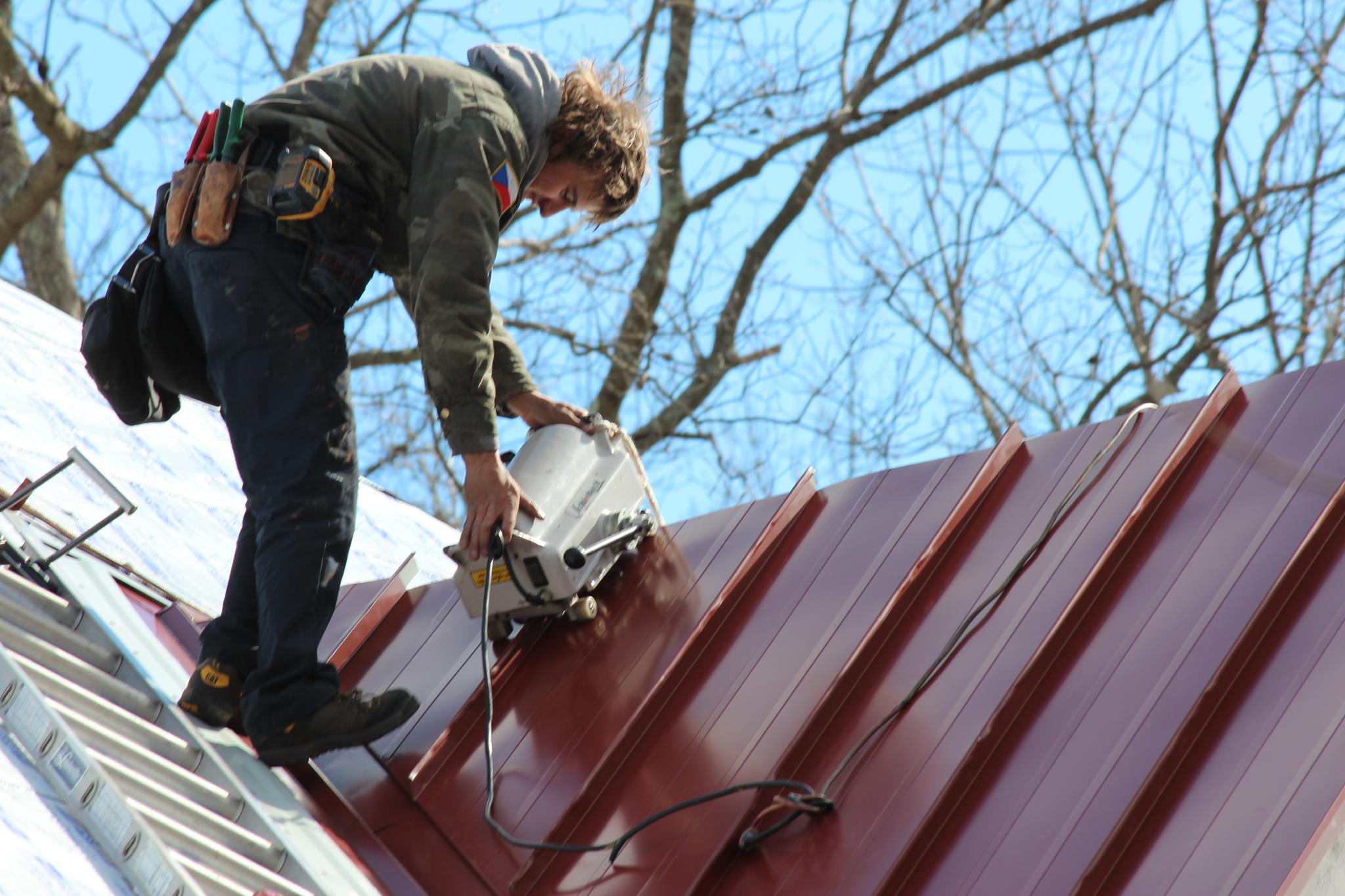Handling A Roof Emergency
As promised, we’re back with a post for those of you taking a wait approach to checking your roof for damage after the big freeze we just went through. It looks like the rain will start on Wednesday, a day sooner and will be with us for a few days.
Any damage your roof might have suffered will surely make itself known with a few days of rain. So we wanted to give you a few tips on how to handle an emergency situation. Making sure you can mitigate any damage to the inside of your home.
The Inside of Your House
The first thing you want to do is deal with the leak inside your house so you can minimize interior damage.
Most of the time, a roof leak will form a small puddle in the attic and/or ceiling until it finds an escape route, usually something like a light fixture or heating register. Ceiling joints or corners are other spots where leaks will often occur. Sometimes these leaks happen in multiple places from one source, making it look much worse than it usually is.
If the ceiling is holding water or you see a bulge in the drywall, poke a hole in the center with a screwdriver or other similar object in the middle of it. This will drain water to that one spot, which will help lessen the damage to the ceiling and help collect the water into one stream.
To collect the water, you can always use buckets or large cooking pots, but the best idea is to use the garbage pail you put outside for waste disposal. These containers are large and most have wheels, making them easier to move even if they are filled with water.
If you have time beforehand, move any articles in the room that could be damaged by moisture off of the ground or into a different room. You may also want to put down drop cloths, garbage bags or tarp on the floor to make sure that carpeting and flooring stay dry as well.
Try to do this as soon as possible after “draining” water from the ceiling. This will also make any cleanup easier and protect surfaces from not just water, but from dust and debris created by removing any damaged drywall or ceiling tiles.
Now that you have done damage control and done the most to keep the interior of your home from the least amount of damage possible, it is time to try to find the source of the roof leak.
Go to the Attic
The best place to start is your attic. Your roofing materials are most likely over a layer of plywood, which means that water will often travel from the leak in the roofing material to the nearest joint in the plywood.
Grab a flashlight. You may also want to take another bucket or large container with you to capture the water closer to the source. If your attic insulation is fiberglass, wear gloves and eye protection as well.
If you are catching any water in the attic, don’t put your container right on top of the ceiling tile or drywall because it could fall through when it fills up. Instead, put a piece of scrap wood across the joists and put the bucket on that to catch any leaks.
Clear off any wet insulation that you find. If there is any standing water, soak it up with a sponge or rag.
The location of the entry point into the attic may be in a different area than where the leak is coming through your ceiling, so be sure to make a wide search of the attic to locate the source. You can usually trace the path along a rafter, but water sometimes also follows the underside of the roof deck.
If it is still raining, look at the active leak and note what surface the leak is dripping from. Examine the underside of the rafters and sheathing. Look for water spots, drips or stains on the woods, or signs of mold growth. Check the insulation in between the floor joists to see if there any signs of water damage, mold or stains. This is most likely the source of your roof leak.
Once you have things in hand, it’s time to call in a professional. They’ll inspect your roof and let you know the extent of the damage and what your options are. DYMI Construction is just a phone call away and will help you with all of your roofing need. From a simple repair to a full replacement. We’re here for you even if you just have a question. Just give us a call or drop us a line.


